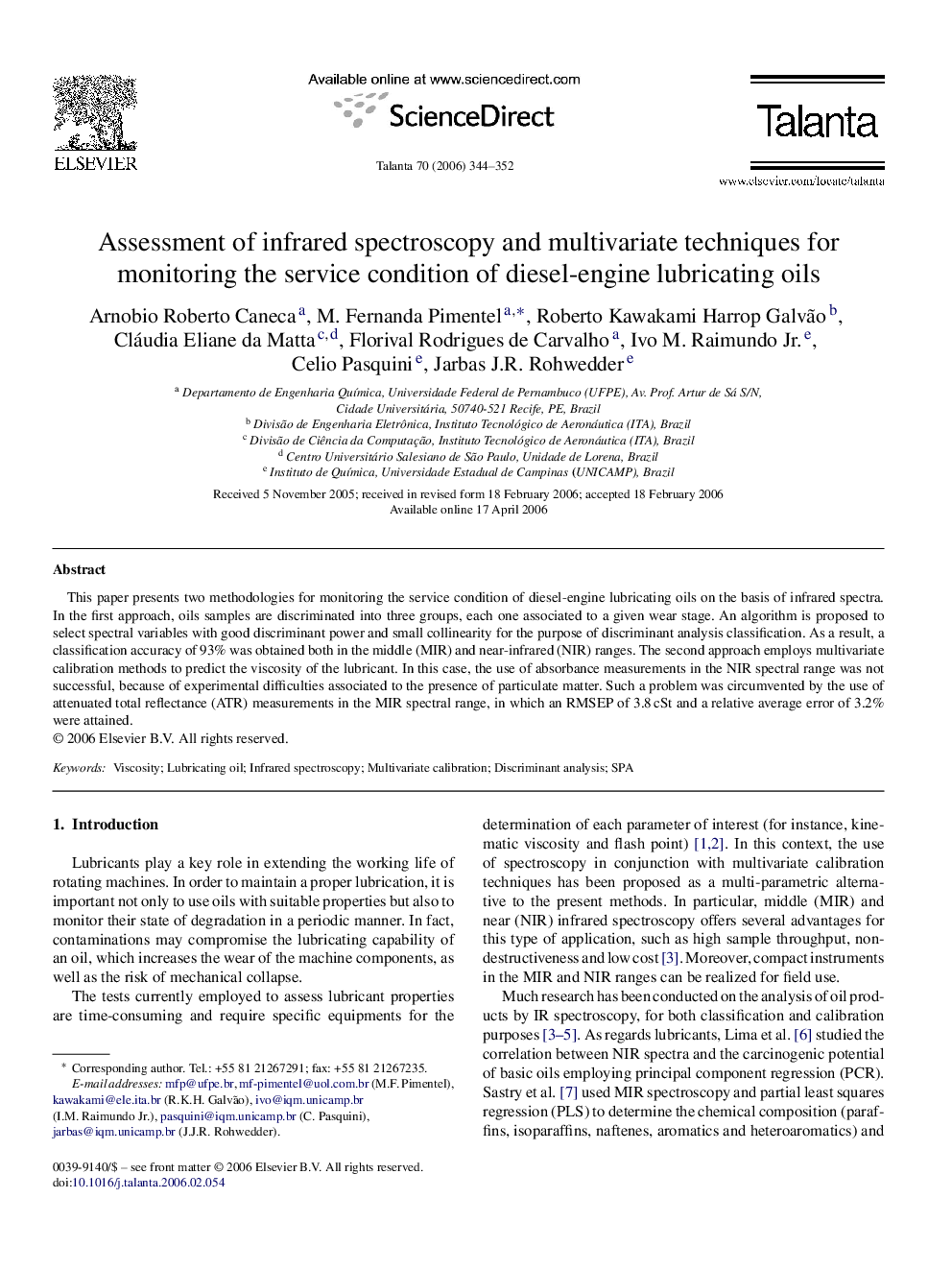| Article ID | Journal | Published Year | Pages | File Type |
|---|---|---|---|---|
| 1246461 | Talanta | 2006 | 9 Pages |
This paper presents two methodologies for monitoring the service condition of diesel-engine lubricating oils on the basis of infrared spectra. In the first approach, oils samples are discriminated into three groups, each one associated to a given wear stage. An algorithm is proposed to select spectral variables with good discriminant power and small collinearity for the purpose of discriminant analysis classification. As a result, a classification accuracy of 93% was obtained both in the middle (MIR) and near-infrared (NIR) ranges. The second approach employs multivariate calibration methods to predict the viscosity of the lubricant. In this case, the use of absorbance measurements in the NIR spectral range was not successful, because of experimental difficulties associated to the presence of particulate matter. Such a problem was circumvented by the use of attenuated total reflectance (ATR) measurements in the MIR spectral range, in which an RMSEP of 3.8 cSt and a relative average error of 3.2% were attained.
